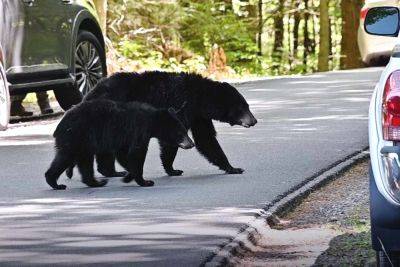Great Smoky Mountains National Park has closed a park road due to bear activity during a time when the animals are foraging for food.
Incredible US national park campgrounds you can’t drive to
20.07.2023 - 12:15 / edition.cnn.com / National Park
Editor’s Note: Monthly Ticket is a CNN Travel series that spotlights some of the most fascinating topics in the travel world. In July, we’re heading for the great outdoors as we highlight everything from incredible adventures to unique camping experiences.
Forget the road less traveled when it comes to camping in US national parks. How about sacking out in places where there are no roads?
Even though most national park campgrounds are easily accessible by motorized vehicles, some of the coolest digs are in places that you can’t drive to. We’re talking permanent campgrounds with basic facilities that you can only reach by foot or boat.
Sure, you’ve got to haul in all of your own food and equipment (and carry out your waste). But the reward is a wilderness sojourn that doesn’t get spoiled by obnoxious car exhaust, annoying RV generators or having your sleep disturbed by people arriving way too late or leaving before the crack of dawn.
Below are eight incredible national park campgrounds that you can’t drive to.
Have you always dreamed of staying on a romantic desert island? Garden Key is about as close as you can get without being an actual castaway.
Located 70 miles from Key West at the extreme western end of the Florida Keys, it’s the only campground in Dry Tortugas National Park. The only way to reach Garden Key with camping equipment is the daily Yankee Freedom IIIferry.
Shaded by palms and other trees, the campsites are situated between two small beaches and Fort Jefferson, an early 19th-century US military citadel that’s the largest brick structure in the western hemisphere.
The campground offers picnic tables, barbecue grills and composting toilets. But that’s it. Campers need to bring everything else: all food and fresh water, tents and sleeping bags, snorkel gear, etc.
Deep inside the Grand Canyon, Bright Angel takes its name from the adjacent creek rather than the eponymous trail that takes you there from the South Rim.
A favorite for hikers doing the Rim-To-Rim trek, the campground features a ranger station (with seasonal ranger programs), potable water, restrooms, picnic tables and storage lockers to keep your food safe from animals. Meals and snacks can be purchased at nearby Phantom Ranch.
A backcountry permit is required to overnight. The campground can be reached from the south or north rims via three trails, with the 9.9-mile (16-kilometer) Bright Angel Trail as the shortest. Campers should be aware that summertime temperatures can rise incredibly high in the canyon bottom.
Another candidate for best desert island campground in a national park, Scorpion Bay lies near the eastern end of Santa Cruz Island off the coast of southern California.
Island Packers runs

Some U.S. national parks are trying to go carbon-free. What does that mean for visitors?
Visiting at night and taking free public transportation are just two of the ways the National Park Service is encouraging visitors to go green.

You Can Book Gwyneth Paltrow's Montecito, California Home on Airbnb — But You Have to Act Fast
Gwyneth Paltrow is inviting you to her house for a sleepover. Yes, you.
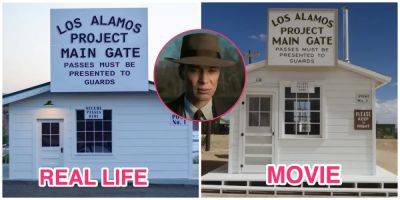
12 locations in 'Oppenheimer' that you can visit in real life
When you watch "Oppenheimer," you might feel like you're being transported to the exact places where history unfolded — and, in some cases, you are.
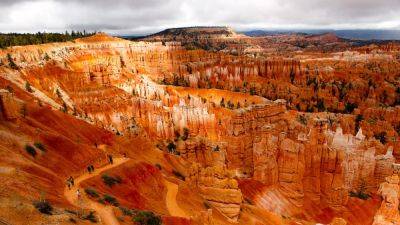
These are the 10 best U.S. national parks to see wildlife
The chance to spot a bear, bison, or bald eagle in the wild is one of the major reasons travelers visit the United States’ 63 national parks. You might assume that a megafauna mecca like Yellowstone National Park would offer the best odds of seeing multiple animals.

Smart Luggage Ban: Which Smart Bags You Can and Can’t Fly With
With multiple airlines (at the time of writing Delta, Alaska, and American) instituting a “smart luggage ban,” travelers have a right to be concerned if they travel with that pricey smart bag they bought. The part of the product in question is the suitcase’s battery, which with new regulations, must be removed in order to bring the bag onboard.

5 Ugly American Stereotypes You Can Learn From
Fair or not, American travelers are sometimes given a bad rap abroad. The ugly American stereotype paints us as insensitive, loud, and unfashionable—even if most of us aren’t! Instead of getting mad about it, why not take it as travel advice? Here’s what you can learn from the ugly American stereotype.

National Parks Pricing Going up for Summer 2018
When the U.S. National Park Service (NPS) proposed drastic hikes to admission fees last fall, the reaction was swift and negative. It seems the NPS heard what people will saying.

A Mexican Craft Brewery Where You Can Spend the Night
Seen from the outside, Red Jane, a new bakery in the center of Chania, a Greek port city on the island of Crete, looks like a Berlin nightclub, with no obvious sign and a concrete facade covered in graffiti. Inside, it might pass for a New York boutique: There are Italian tiles on the floor and an exposed-brick ceiling and on a long red marble counter, lit by minimalist pendant lamps, pastries are laid out like jewels in a glass vitrine. Owned by Nikos Tsepetis, the hotelier behind the nearby beach resort Ammos (a favorite of the art and design crowd), the space is the first fully realized interiors project overseen by the London-based lighting and furniture designer Michael Anastassiades. Eyal Schwartz, the former head baker and co-owner of London’s E5 Bakehouse, created the menu. On its opening day this month, Red Jane sold out of its chocolate-filled croissants, koulouri (Greek sesame-topped bagels) and baklava swirls by noon. Locals lingered for an hour after, despite the fact that Tsepetis and Anastassiades designed the space without tables.

Sailing Through Indonesia's Komodo National Park
Soon after the turn of the 20th century, rumors began making their way west that man-eating lizards, 10 feet long and weighing up to 350 pounds, with fearsome talons, chain mail scales, and serrated teeth dripping with venom, had been found living on a remote Indonesian island. The source of the reports was Lieutenant Jacques Karel Henri van Steyn van Hensbroek, a Dutch colonial officer, who revealed the existence of Varanus komodoensis, the world's largest extant reptile, in 1910. But it was a 1926 American Museum of Natural History expedition to capture live specimens, led by a flamboyant Vanderbilt scion named William Douglas Burden, that caused interest in the creature to explode in popular culture. Burden's gripping account, Dragon Lizards of Komodo, inspired his friend Merian C. Cooper to dream up the primordial Skull Island for his classic 1933 film, King Kong. Civilization was steaming forward, and yet, in that era, the map still seemed to hold places that hid ancient secrets.
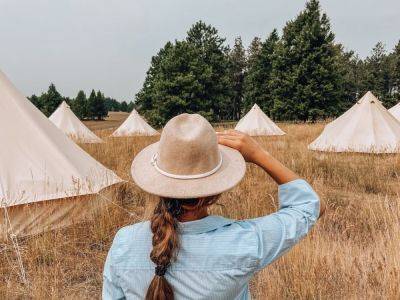
10 of the Best Hotels Near Glacier National Park in 2023
Glacier National Park is one of the most gorgeous parks in the national park system. The sprawling park is in northern Montana and is home to some of the oldest glaciers in the US — not to mention wildlife like grizzly and brown bears, mountain goats, bighorn sheep, pumas, wolves, elk, moose, and more. The park has gorgeous day hikes running between half a mile or 20 miles, and some of the best backcountry backpacking in the US. You can even hike from the US into Waterton Lakes National Park, the attached national park just on the other side of the US-Canada border.
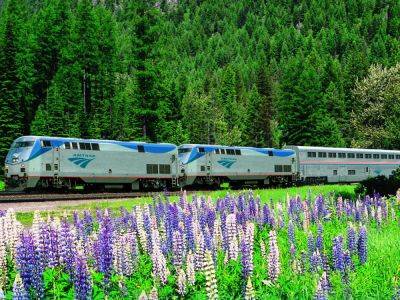
The 7 Most Scenic Amtrak Routes Through National Parks
American trains are not the fastest in the world. They also severely lack the network of tracks necessary for people to ditch their cars or forego flying to rely on them entirely for their domestic travel needs.
